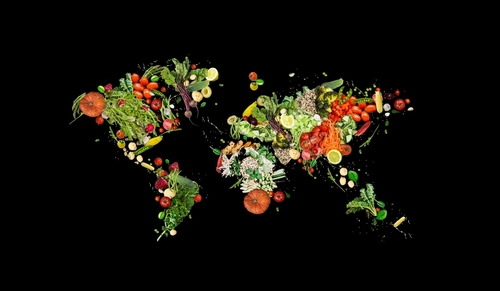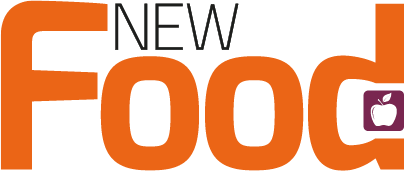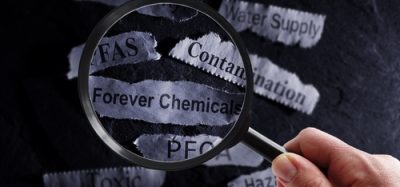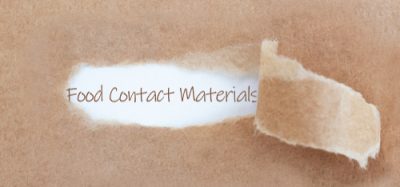Ensuring food safety through accurate traceability: why knowing your food’s origin matters
- Like
- Digg
- Del
- Tumblr
- VKontakte
- Buffer
- Love This
- Odnoklassniki
- Meneame
- Blogger
- Amazon
- Yahoo Mail
- Gmail
- AOL
- Newsvine
- HackerNews
- Evernote
- MySpace
- Mail.ru
- Viadeo
- Line
- Comments
- Yummly
- SMS
- Viber
- Telegram
- Subscribe
- Skype
- Facebook Messenger
- Kakao
- LiveJournal
- Yammer
- Edgar
- Fintel
- Mix
- Instapaper
- Copy Link
Posted: 11 February 2025 | Alison Johnson | No comments yet
Alison Johnson at Food Forensics illustrates the importance of being proactive in assuring the safety of your product and how due diligence can be your saving grace.


A critical component of food safety risk management is origin verification: ensuring that the food’s source is accurately represented.
Food safety is fundamental to consumer trust, and businesses are ultimately responsible for ensuring the quality and safety of the food they sell. With the complexities of today’s global food supply chains, this responsibility extends beyond relying on suppliers’ certificates of analysis or assurances. To protect customers and brand reputation, businesses must implement robust due diligence processes, including precise traceability mechanisms. The reality is clear: without direct oversight and verification, you could be held accountable for any issue that arises—even if the product wasn’t directly sourced from your approved suppliers.
A comprehensive due diligence programme is critical to safeguarding food safety. Landmark cases like Donoghue v. Stevenson (1932) established the legal principle of duty of care, holding manufacturers and retailers accountable for consumer safety. More recent cases, such as Tesco Stores Ltd v. Nattrass (1972) demonstrate that businesses can effectively defend against liability if they can prove due diligence through internal quality control systems and well-documented safety protocols. The question remains: would your organisation be able to provide clear, verifiable evidence of due diligence in the face of scrutiny? If the answer is uncertain, it is time to rethink your approach to food safety, as consumer trust – and your brand’s reputation – is at risk.
Traceability as a food safety imperative
A critical component of food safety risk management is origin verification: ensuring that the food’s source is accurately represented. Mislabelling the origin of food products might seem inconsequential, but it can have serious consequences for public health and your business. Take, for example, a hypothetical situation involving a hepatitis outbreak linked to strawberries that are labelled as British. Initially, production halts at British farms for investigation. But if some of these ‘British’ strawberries were actually imported from a different source – let’s say Spain – the potential contamination points widen. If testing revealed further origin discrepancies, such as suppliers sourcing from Morocco, this would constitute a complex safety risk, damaging consumer confidence and complicating the investigation. This scenario illustrates how fraudulent origin mislabelling jeopardises safety, increases risk and destabilises legitimate businesses, all because of what some dismiss as ‘just mislabelling’.
Strengthening traceability with scientific verification
“Mislabelling might seem minor, but it can have serious consequences for public health and your business.”
A lack of precise traceability directly impacts consumer safety and market integrity. To prevent the occurrence of such scenarios, businesses must engage in proactive origin verification measures. One effective method is environmental fingerprinting, which leverages scientific testing to verify product authenticity. By using tools like tamper-evident sampling bags and environmental fingerprinting databases, companies can build a robust library of reference fingerprints that provide verifiable origin points, allowing rapid identification should questions arise.
Lessons from past food scandals
Consider the horse meat scandal, where horse meat was sold as beef, raising serious safety concerns. While many cultures consume horse meat, it is typically subject to safety restrictions, including the avoidance of certain veterinary drugs that are harmful to humans. In the UK, however, these safeguards did not apply because the meat was falsely presented as beef. Consumers, unaware of the substitution, had no assurance that the product was safe. This scandal not only highlighted the ethical breaches in food labelling but also emphasised the critical need for robust traceability systems to ensure that food products meet safety standards.
Establishing an adequate due diligence plan
So, what constitutes an effective due diligence plan in food safety? It involves identifying, mitigating and managing risks associated with food safety, quality and authenticity across multiple areas:
- Food hygiene and compliance: Implementing and maintaining a comprehensive Hazard Analysis and Critical Control Points (HACCP) programme is essential for identifying, evaluating and controlling potential hazards. This programme should encompass robust cleaning protocols, allergen management and continuous monitoring to mitigate key risk factors. Additionally, it should involve a wide range of stakeholders across the business to ensure thorough compliance and collective accountability.
- Supplier and ingredient verification: Verifying supplier credentials and establishing clear quality benchmarks are essential. Do you approve suppliers through documented standards and certifications (such as BRCGS or SALSA)? Do you test ingredients for contamination or allergens, and do you robustly follow up your supplier audits’ non-conformances? Regular documented supplier audits and traceability checks provide a strong foundation for due diligence.
- Regulatory compliance: Staying up to date with local and international regulations on labelling, packaging and food safety requirements is critical. Ensure your business holds the necessary permits and complies with laws that apply to regions wherein your products are sold. It’s not possible to know everything or to have resources to know everything, so work with strategic experts to support you.
- Risk assessment and management: Conducting thorough risk assessments for food safety hazards, including biological, chemical and physical risks, is key. These assessments should be dynamic, regularly updated to incorporate new insights, and adaptable to emerging threats. Include Vulnerability Assessment (VA)CCP and Threat Assessment (TA)CCP in this area. Many businesses rely on risk newsletters or horizon-scanning tools; it is essential to turn these insights into actionable steps.
- Documentation and training: Maintaining comprehensive documentation and training records is fundamental. This includes written risk assessments, testing protocols, audit reports and staff training records. Documentation should be robust enough to demonstrate that your processes are active, effective and responsive to issues.
- Communication: Does your business foster open and transparent communication channels to ensure that any changes in supply, recipes or analysis results are promptly and efficiently shared with all relevant stakeholders? This approach supports rapid risk assessment and effective management, promoting shared responsibility and accountability across the supply chain.
In several cases, companies have avoided liability by demonstrating thorough, documented processes that protect consumer safety. The Mars Chocolate Recall (2016) serves as a recent example, wherein Mars was able to demonstrate that it took reasonable and proactive steps by initiating a voluntary recall as soon as a contamination risk was identified. By having a clear, documented plan, Mars showed that it prioritised consumer safety, resulting in a more favourable legal outcome.
Key takeaways for food businesses
The following is a final checklist for establishing a food safety due diligence programme that can effectively safeguard your business:
- Recognise your responsibility: You are responsible for every product you sell, regardless of where it originated. Build robust auditable traceability and safety measures directly into your business operations, not just through your suppliers.
- Prioritise origin integrity: Treat origin verification as a core element of food safety for all in the supply chain. Mislabelling can carry serious consequences for public health, as well as for your brand.
- Maintain a dynamic due diligence plan: Regularly review and update your risk management and traceability processes to keep pace with emerging threats and market changes; cascade throughout the business to promote shared responsibility and accountability.
- Partner with experts when needed: If specialised expertise is required, consider collaborating with qualified professionals who can enhance your due diligence efforts. Leveraging expert insights ensures comprehensive oversight, addressing potential gaps in knowledge and strengthening your programme’s effectiveness.
- Document, execute and act: Develop a detailed plan, execute each step thoroughly, and respond swiftly to any unexpected issues. Conducting trial practice runs not only refines your processes but also prepares your team to handle real challenges with confidence and agility, reducing risk and ensuring smoother operations when it matters most.
An investment in traceability, robust supplier management and proactive quality assurance measures not only safeguards public health but also strengthens consumer trust in your brand. In today’s global food market, a reputation for safety and integrity is invaluable—and it all starts with due diligence.
Author biography
Alison Johnson is the Managing Director and founder of Food Forensics, a UKAS-accredited testing laboratory and solution provider. After working for 15 years in the meat industry from farm to fork, Alison identified a gap in the market and set up Food Forensics in 2012 to provide solutions for authenticity testing in food. The business has developed into a leader in its field, providing testing, insight and intelligence solutions across the food sector to manage food risk and provide brand protection.









